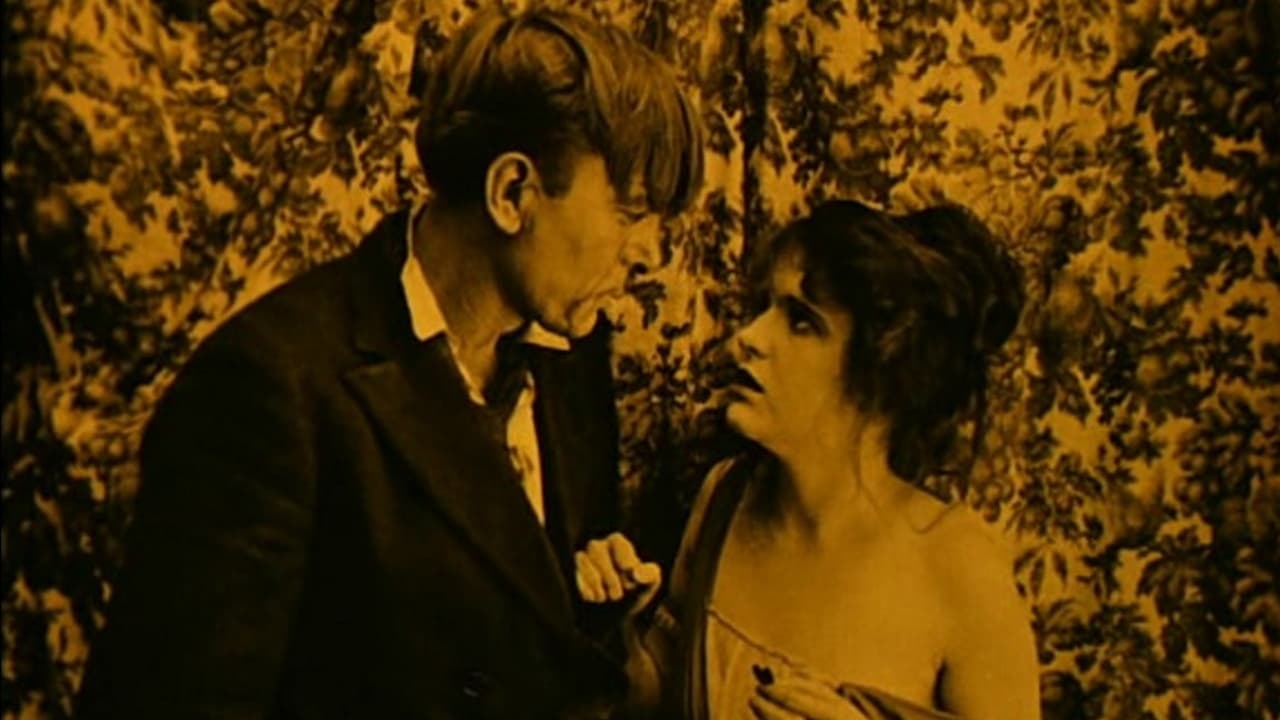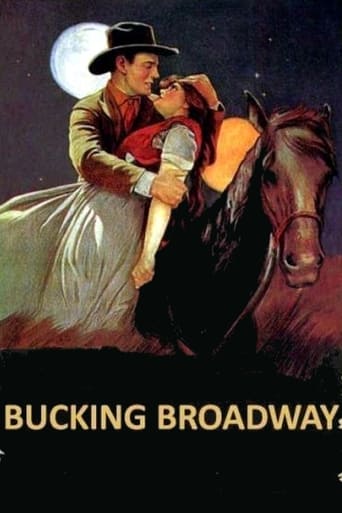SpuffyWeb
Sadly Over-hyped
Siflutter
It's easily one of the freshest, sharpest and most enjoyable films of this year.
Nayan Gough
A great movie, one of the best of this year. There was a bit of confusion at one point in the plot, but nothing serious.
Freeman
This film is so real. It treats its characters with so much care and sensitivity.
Edgar Allan Pooh
. . . that he's too eager to settle for "sloppy seconds" as BUCKING BR0ADWAY draws to its soggy close. Harry Carey as Sheltered Buckaroo "Cheyenne Harry" seems to blow his chance at Happiness with his One True Friend, a nameless New York City pick-pocket\hooker. Maybe his fickle one-time fiancée Helen Clayton is the only fish in Harry's native Wyoming sea, but after a week sleeping on an East-bound slow train with a brutish drunken womanizer named Eugene, Helen's clearly Damaged Goods. Back in the early 1900s Harry would have lacked a solid Public School grounding in Sex Education, so he's in no position to judge the difference between a dog-eared "country gal" (with an emphasis on that first syllable) and a state-of-the-art Pro in Good Working Order. While there's about an 80% chance that Helen's harboring Gene's Fetal Alcohol Syndrome bun in her oven, Harry's Soft-Hearted but helpful strumpet no doubt has used all the tricks at her disposal to stave off pregnancy during the five decades before she'll have The Pill at her disposal. One can only hope that there's a post-Big Brawl "Rest of the Story" here, in which Harry wises up, swears off Wyoming, and makes the chick who's been Around the World his First Lady.
Cineanalyst
The scenario of "Bucking Broadway" is full of clichés: the Baddie dude lures the girl from the West to go East with him under the proposal of marriage—breaking her prior engagement to the good Western hero. The hero goes east to rescue her. Yet, past the story moviegoers have seen numerous times is some exceptional cinematography for 1917. There's some beautiful photography of the Western landscape, including long vistas, with hilly countryside, misty horizons and lovely compositions. The application of lighting is also quite expert, including nighttime photography and use of low-key lighting for mood. Additionally, there's a mirror shot of Helen reinforcing that she's in a reflective state of mind. And, there are some shots through doorways—a John Ford trademark from the beginning (he also had them in "Straight Shooting" (1917)).I was taken aback by the photography in this film, despite it being made by would-be great western filmmaker John Ford, because his earlier 1917 film, "Straight Shooting" was rather static and this was early in his career—filming cheap westerns at a then relatively small company. "Bucking Broadway" seems a vast improvement photographically over "Straight Shooting", if my memory serves me correctly. To be fair, "Straight Shooting" appears to have been Ford's first feature, but the advancement within one year is still impressive. "Bucking Broadway" doesn't entirely rely upon long shots, as there are a good number of close-ups. Some moments are dated, such as the aforementioned horse-breaking scene statically filmed from a long-shot stationary camera. If anything else, Ford and his cinematographers may have somewhat overused low-key lighting, such as in dark scenes where the mood is light. Nevertheless, it's a good-looking film, especially when it's set in Wyoming. Nice tinting and a quality print also help.A couple further remarks: Harry Carrey had a nicely rugged face, which is more evident here than in 'Straight Shooting' and elsewhere. His looks are comparable to the biggest silent era western star William S. Hart, and that's probably why they employed Carrey in the genre, with the screen persona of "Cheyenne Harry" (in the "Broncho Billy" tradition of having a consistent character and name).There are quite a few humorous moments in "Bucking Broadway", including the hasty, farcical brawl. Mostly, they aren't bad here, which is praiseworthy considering how often that isn't the case in comical westerns. Ford would often inject comedy relief into his films, which is a notable difference from some other early Western filmmakers, like Hart, Thomas H. Ince, or D.W. Griffith. The more important beginning here for John Ford, however, was in beginning to master excellent cinematography.
nikmal
At the Europa Film Treasures site: see http://www.europafilmtreasures.eu/fiche_technique.htm?ID=246As they say:"Film Treasures safeguarded by important European film archives are finally on the net! Thank you for visiting our site in such great numbers."I had not previously seen a very early John Ford film, but his directorial tropes are clearly evident here. The plot, though simple, is effective and I was happy to watch it all through (which is not something I could say about the last multiplex film I went to.Running time in this version is 52:11, and it made me watch 'The Searchers' again to see if I could spot William Steele as he was 40 years after this film!
rdjeffers
Saturday July 15, 11:00am The Castro, San FranciscoA cowpoke has his promised gal snatched away to the big city by an underhanded dude who comes to the ranch and somehow tames the stallion that's already killed four men. Harry beats a hasty path to New York intent on winning his girl back. Ford's easily recognizable style is quite intact even in this early feature. A beautiful opening shot shows a lone cowboy on his horse, standing on a cliff with the winding river below as riders cross. When Carey loses his girl and ponders what he must do next, Ford places him in the foreground rise of a low valley, with a look of steely-eyed determination, while the heard grazes below in the distance. The finale includes an all-out brawl between the dude, Carey and their respective gangs.In the post-show discussion with Harry Carey Jr. and Ford biographer Joseph McBride, Mr. Carey described Jack Ford's directorial style and fight scenes. "He just let you go and said 'fight!' I broke three ribs once."

